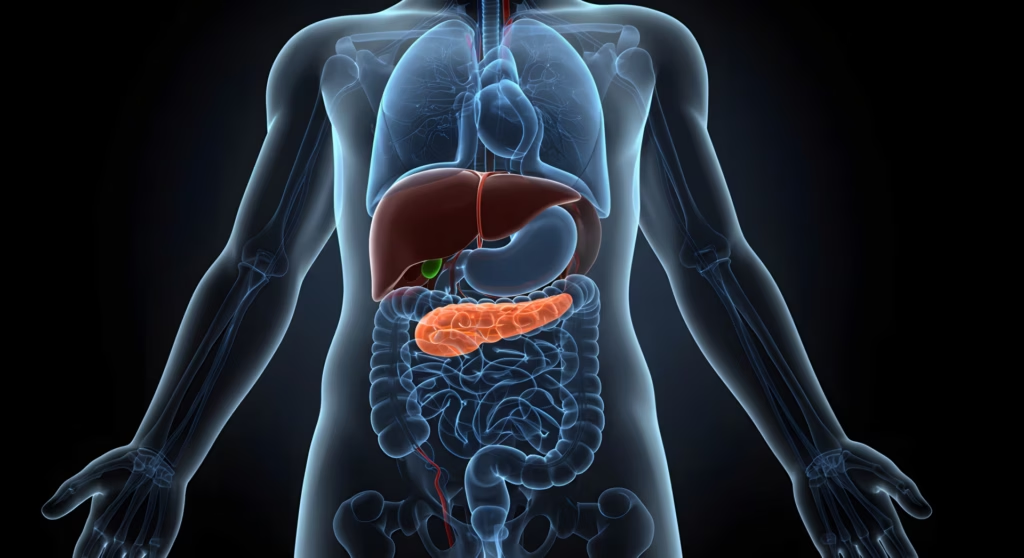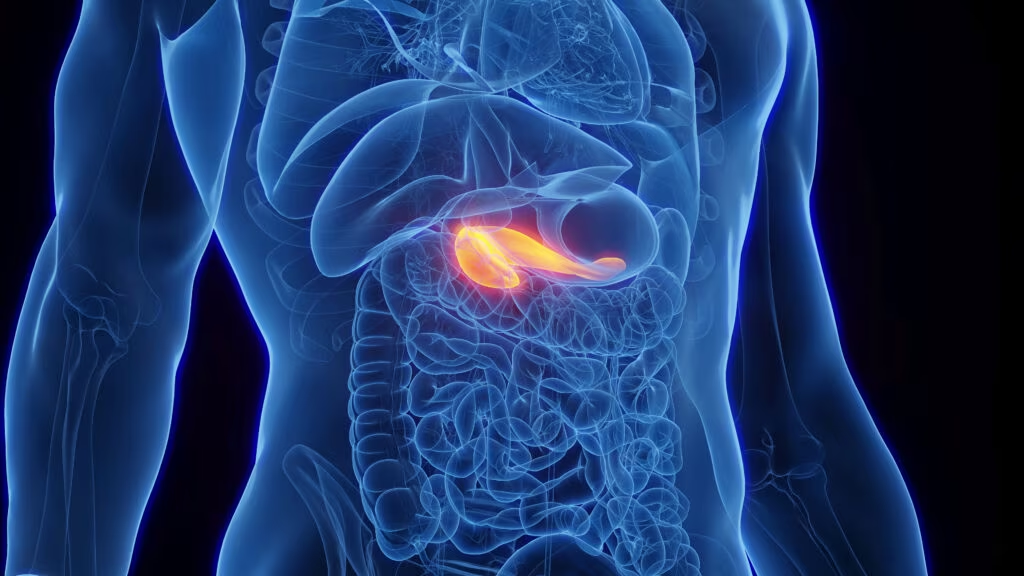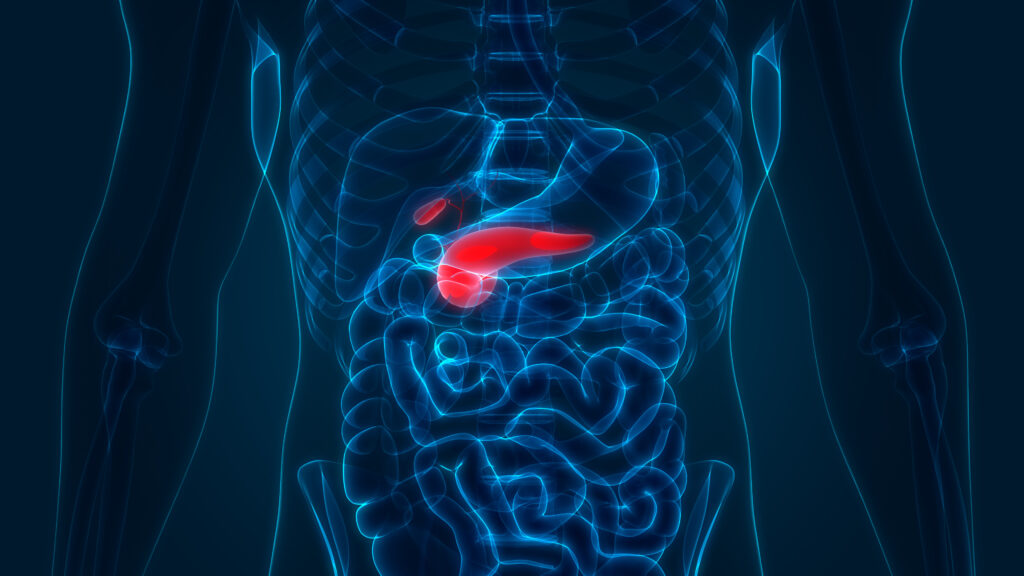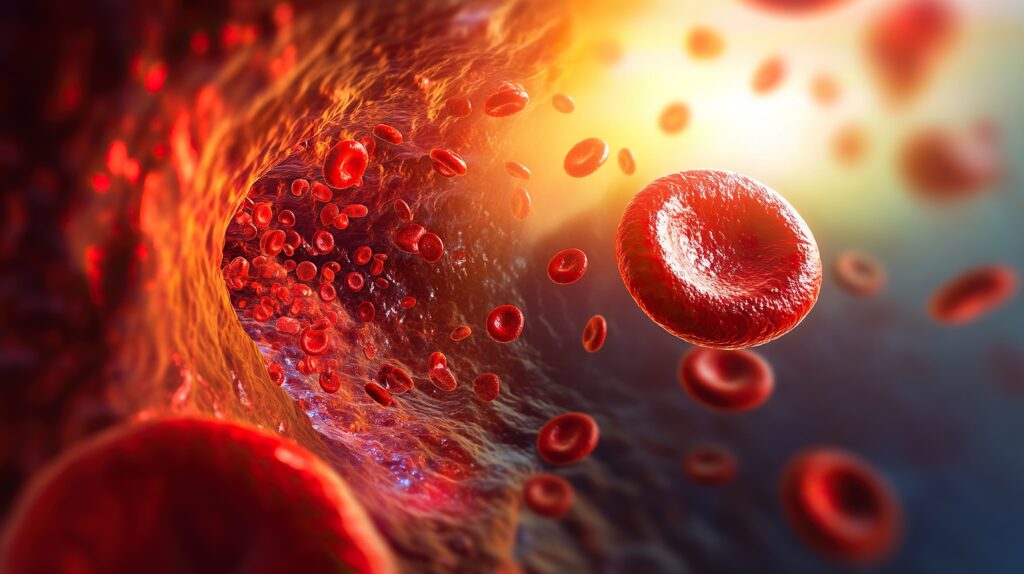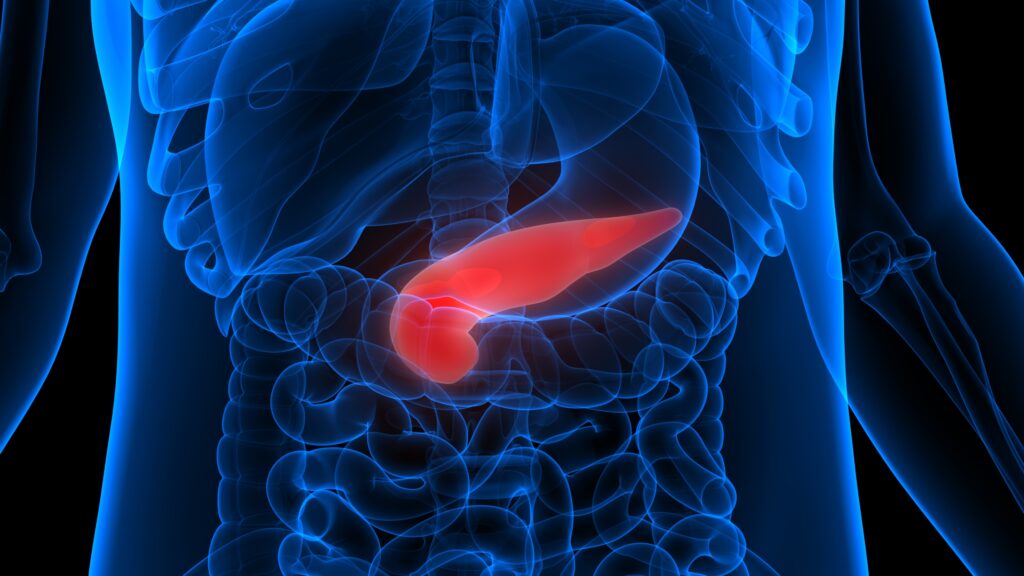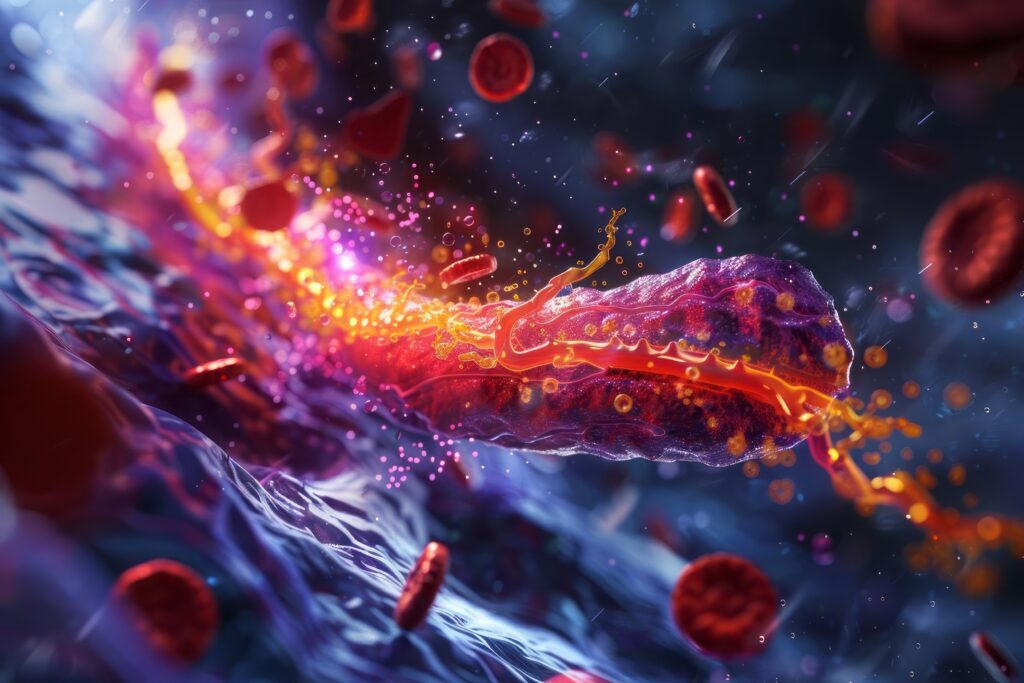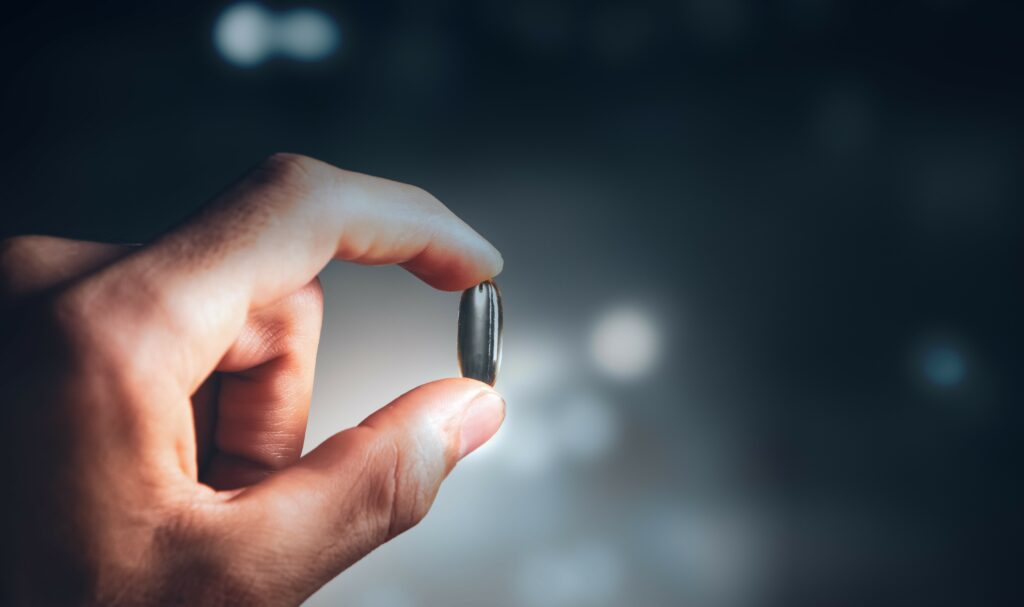Diabetic kidney disease is rapidly becoming the major cause of end-stage renal disease in the US and the number of patients with diabetic kidney disease is increasing at an epidemic rate worldwide. It is widely accepted that the principal cause of all diabetic complications is increased blood sugar.
Diabetic kidney disease is rapidly becoming the major cause of end-stage renal disease in the US and the number of patients with diabetic kidney disease is increasing at an epidemic rate worldwide. It is widely accepted that the principal cause of all diabetic complications is increased blood sugar. Although this sounds like an obvious statement, it actually wasn’t until the Diabetes Control and Complications Trial (DCCT) in type 1 diabetic patients,1 published in the early 1990s, and the United Kingdom Prospective Diabetes Study (UKPDS) in type 2 diabetic patients,2 published in the late 1990s, that definitive proof was published that as blood sugar control improved, there was a continuous decrease in the development and progression of diabetic complications. Thus, it would seem that tight control of blood sugar could end the scourge of diabetic complications. A pancreas transplant (and, in the future, possibly islet cell transplants) is the only way to perfectly control blood sugar. All other available methods for controlling blood sugar, including oral hypoglycemic drugs, periodic insulin shots, and continuous insulin pumps, still allow for modest elevations of blood sugar out of the normal range. These repeated fluctuations in blood sugar that occur throughout the day in diabetic patients are enough to cause cell damage. That is to say, one does not need persistent high blood sugars to cause damage but rather repeated excursions out of the normal range are enough to activate damaging cellular events and to impair critical cellular defense processes. Until there is a cure for diabetes, it is necessary to understand the deleterious mechanisms effected by increased glucose in order to prevent complications.
Pathophysiologic Mechanisms Associated with Diabetic Kidney Disease
The following mechanisms have been shown to play a role in the development and progression of diabetic kidney disease:
- Activation of protein kinase Cβ (PKCβ)3—this is a serine/threonine kinase that has multiple actions on cellular functions leading to cell damage.
- Increased advanced glycation end products (AGEs)4—these are produced by the prolonged exposure of amino acids to increased glucose levels. The AGEs cause cellular damage by altering cell protein actions and cell membrane functions.
- Increased transforming growth factor β (TGFβ)5— this protein leads to activation of a number of inflammatory compounds leading to fibrosis in the kidney.
- Hypertension and hyperfiltration in the glomerulus (which is the filtering unit of the kidney—there are about 1 million in each kidney)5—the increased pressure in the glomerulus is decreased by blocking the actions of angiotensin II.
- Increased aldose reductase which produces sorbitol.
- Others.
Treatments directed against some of these mechanisms are either routinely being used or are in clinical trials. For example, the angiotensin-converting enzyme inhibitors (ACE inhibitors) and the angiotensin receptor blockers (ARBs) are very commonly used drugs aimed at reducing hypertension in the glomerulus. ACE inhibitors and ARBs are clearly of value in reducing progression of established diabetic kidney disease but they have not been a cure; the epidemic rise in the number of patients with end-stage renal disease due to diabetes continues even though ACE inhibitors and ARBs are widely prescribed.There are currently drug trials aimed at inhibiting PKCβ and at inhibiting the formation of advanced glycation end products.4 It remains to be seen how valuable the PKCβ inhibitor and the AGE inhibitor will be for diabetic kidney disease;4 clinical trials are on-going. There has been no success with aldose reductase inhibitors in diabetic kidney disease to date. Thus, there remains a pressing need to understand how all of these disease mechanisms interrelate and what processes are of central importance.
A very common finding in all tissues affected by diabetes, including the kidney, is the presence of increased oxidative stress.6–8 Indeed, it has been proposed that oxidative stress is the central problem in that many of the above mechanisms either cause increased oxidative stress or actually may be activated by increased oxidative stress. There is no question that significantly increased oxidative stress is seen in diabetes and diabetic kidney disease. But the understanding of the importance of oxidative stress to the development of disease has been muddied by using a general term (oxidative stress) for a variety of oxidants and a variety of specific processes. The following discussion is aimed at briefly elucidating the issues surrounding oxidative stress and diabetic kidney disease.
What is Oxidative Stress?
Oxygen, either alone or associated with a hydrogen ion (e.g. OH) or nitrogen (e.g. NO), can be converted into a very highly reactive molecule that will rapidly interact with proteins, lipids, and carbohydrates. When these highly reactive molecules attach to these normal cellular components, the normal cellular components can be changed into abnormal ones. A critical cell membrane protein can become very rigid instead of being flexible, which impairs cell functions and may lead to cell death. Lipids can also be altered such that lipid function is impaired and the oxidized lipid itself may act as an oxidant affecting other cell processes. A more specific terminology for these highly reactive compounds is as follows: oxidative stress involves reactive molecules that are composed of oxygen alone or oxygen and hydrogen (e.g. hydrogen peroxide); reactive nitrogen species (nitrosyl stress) are reactive molecules composed of nitrogen and reactive oxygen;9 and carbonyl stress involves reactive molecules containing carbon such as occur when carbohydrates non-enzymatically attach to amino acids (e.g.AGEs). It is important to be clear what is actually being studied (that is, what was actually measured) when thinking about oxidative stress in order to properly interpret articles about oxidant stress.
Sources of Oxidative Stress
The amount of oxidants in the cell is determined by the balance of production of oxidants versus the destruction of oxidants (called reduction) by antioxidants (see Figure 1).Thus, increased oxidant production and/or decreased antioxidant function can lead to increased oxidant stress. There are many naturally occurring processes that produce oxidants. Normally the cell regulates the amount of oxidants very closely. Indeed, at physiologic levels, oxidants are important signaling molecules that are involved in such processes such as cell growth and regulation of transcription factors, e.g. nuclear factor kappa-B (NF-κB). As far as diabetic kidney disease is concerned, many data show that both increased oxidant production and decreased antioxidant function are responsible for increased oxidant stressing. Moreover, nitrosyl and carbonyl stress have been shown to be increased in diabetic kidney disease.
Increased Oxidant Production
Increased production of oxidants occurs for a variety of reasons due to high glucose. Brownlee and colleagues have shown that high glucose activates superoxide production (a form of oxidant) from mitochondria.10 According to Brownlee’s hypothesis and published work, the superoxide produced by the mitochondria leads to inhibition of a particular glycolytic enzyme (G3PD) and, as a consequence, a build-up of molecules upstream of this enzyme.These molecules are then shunted to other pathways and can activate PKCβ, aldose reductase, and other pathways. Another well-described source of increased oxidant production is via activation of an enzyme called reduced nicotinomide adenine dinucleotide phosphate (NADPH) oxidase.6 NADPH oxidase is a critical component of macrophages and neutrophils but is also found in many other cell types. This enzyme also produces the superoxide radical and is stimulated by PKCβ. These two examples of superoxide production illustrate a highly detailed and complex understanding of oxidative stress and diabetic kidney disease. High glucose stimulates superoxide production from mitochondria, which would help to increase PKCβ activity, which has multiple deleterious effects. One of the effects of increased PKCβ activity is to activate NADPH oxidase. Thus, increased oxidants can activate a mechanism thought to be of central importance in the development of diabetic kidney disease (PKCβ) and in turn, the increased PKCβ activity leads to more production of oxidants, leading to a positive feedback loop. Of note, all of the mechanisms noted above as being causal in the development and progression of diabetic kidney disease are either affected by oxidative stress or lead to increased oxidative stress. For example, AGEs, after binding to their receptors (so-called RAGE for receptor for advanced glycation end product), among other actions cause increased NADPH oxidase activity. Angiotensin II (the hormone whose actions are blocked by ACE-I and ARB drugs) also can activate NADPH oxidase. TGFβ has a number of actions including stimulation of oxidative stress; and aldose reductase uses NADPH for its activity. As discussed below, NADPH is the principal reducing agent in the cell. Thus, consumption of NADPH by aldose reductase would lead to an impaired antioxidant defense system.
Decreased Antoxidant Actions
Decreased activity of antioxidants also occurs in diabetic kidney disease. First, consider how the antioxidant system works. The antioxidant system in cells principally consists of one system (the glutathione system) and two enzymes—catalase and superoxide dismutase (SOD). SOD exists in two forms—Cu, Zn SOD, which is in the cytoplasm, and MnSOD, which is in the mitochondria. SOD takes two superoxide molecules and converts them to hydrogen peroxide. The hydrogen peroxide (which is an oxidant) then needs to be reduced, which occurs either via the actions of catalase or by the glutathione system. Catalase takes hydrogen peroxide and converts it to water. The glutathione system consists of a series of enzymes that regulate the amount of reduced and oxidized glutathione. Reduced glutathione (GSH) is used to detoxify (reduce) an oxidant and in turn is converted into an oxidized form of glutathione (GSSG). The enzyme glutathione reductase then converts it back to reduced glutathione using NADPH (the principal reducing power in the cell).The catalase enzyme is also critically dependent on NADPH. Thus, the entire antioxidant system requires adequate NADPH levels. The main source of NADPH in cells is the enzyme glucose 6-phosphate dehydrogenase (G6PD). The author’s lab and others have shown that G6PD is significantly impaired under high glucose conditions and has recently shown that G6PD activity is significantly impaired in diabetic kidneys.11 Diabetes in animals has been shown to be associated with reduced G6PD activity. Other researchers have shown that increased glucose is associated with a lack of increase in antioxidant enzymes such as glutathione peroxidase, catalase and Cu,Zn SOD, suggesting a problem in the antioxidant system as the increased oxidant stress caused by diabetes should lead to increased activity of these enzymes.12 Others have shown that overexpression of Cu,Zn SOD has significant beneficial effects in preventing the development of diabetic kidney disease in animals;13 thus, impaired antioxidant function also plays a role in the development of diabetic kidney disease.
Effects of Antioxidants on Progression of Diabetic Kidney Disease
There have been multiple trials using vitamin E, vitamin C, probucol, taurine, n-acetylcysteine, lipoic acid, and other antioxidant drugs in animals. Animal studies using these compounds have been shown to be effective in reducing the development of diabetic kidney disease. It’s hard to translate these animal results to humans as many trials in mice and rats are very effective in the particular animal but often ineffective in humans. This may be due to short duration of animal studies, dose differences between animals and humans, and different pathophysiologic processes between animals and humans. Human studies with antioxidants for diabetic nephropathy are limited and have had variable results. Some researchers have concluded that this means that oxidative stress is not a central mechanism in diabetic nephropathy. The author views this differently. As discussed above, there is much evidence linking oxidative stress to all pathophysiologic mechanisms associated with diabetic kidney disease, making it highly likely that oxidative stress is of critical pathophysiologic importance. But it is certainly true that the relative importance of oxidative stress has not been definitively shown as yet. At this point we are just at the beginning of a more detailed understanding of oxidative stress (as well as the interrelationships with nitrosyl and carbonyl stress). As noted above, there are many forms of oxidants and there are multiple reasons for increased oxidant stress. Moreover, there are complex interrelationships that need to be carefully examined in order to piece together a detailed, specific understanding of the pathologic steps responsible for oxidative stress and diabetic kidney disease. As the understanding of these steps is clearly elucidated and the relative importance of each step is determined, drugs will be developed to alter the main process(es) responsible for increased oxidative stress. ■


